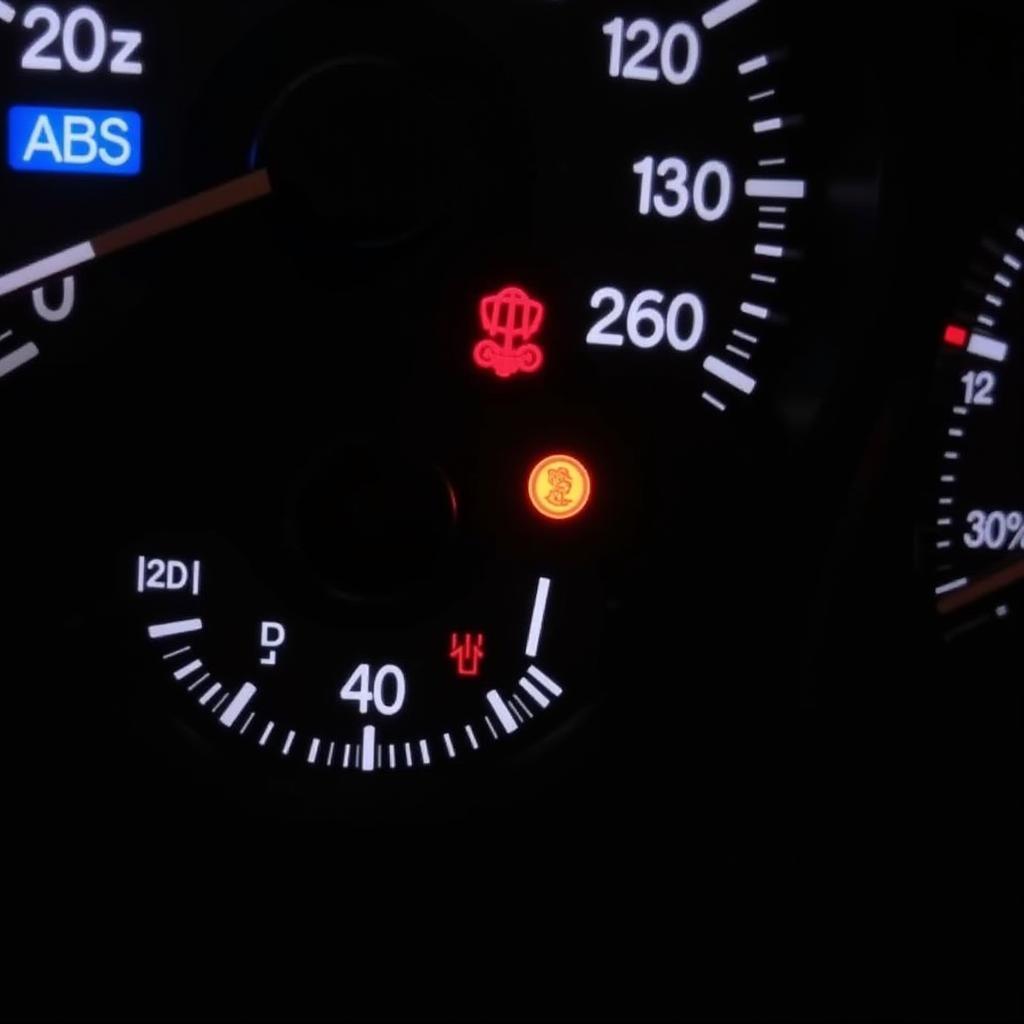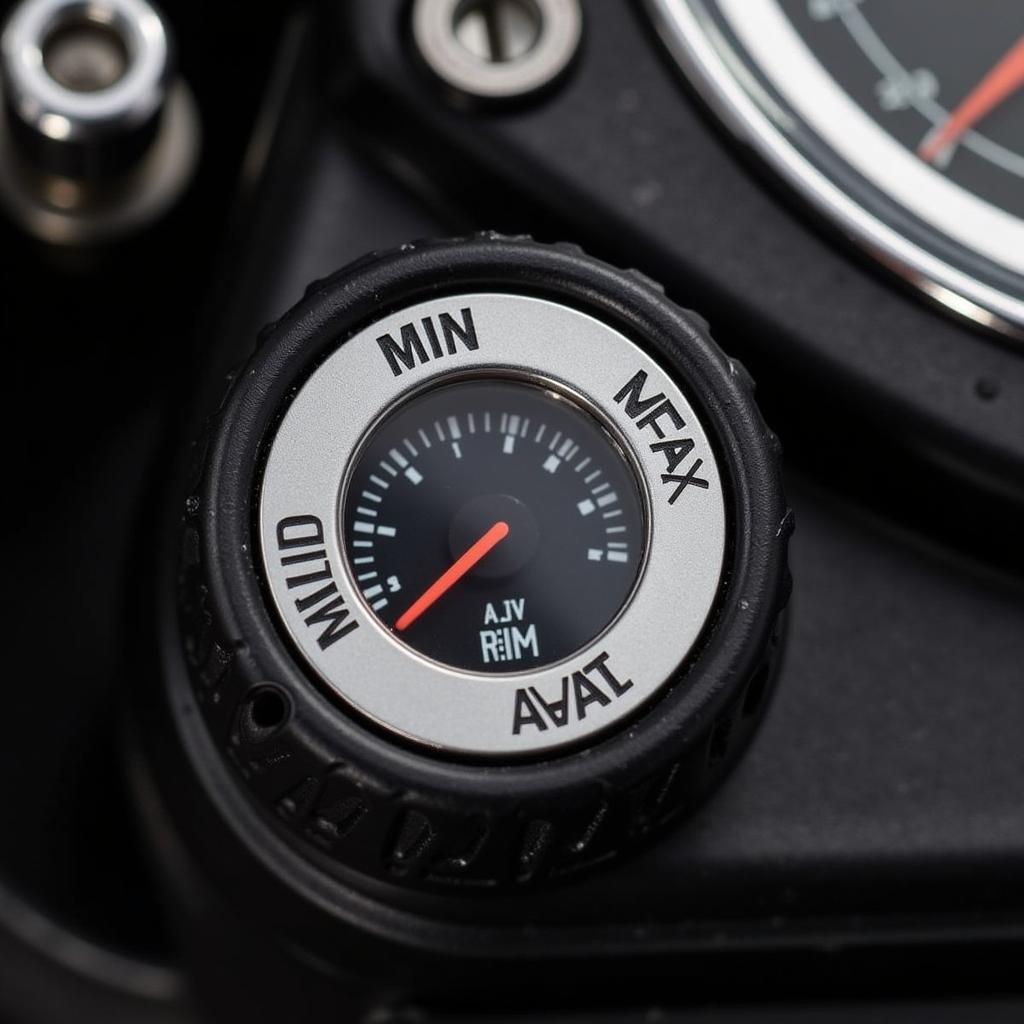A glowing brake warning light on your dashboard is a nerve-wracking experience, to say the least. It’s a stark reminder that your car’s braking system needs attention. While it could be something minor, ignoring it could lead to serious consequences. This guide will walk you through the common causes of a persistent brake warning light and provide practical steps to help you troubleshoot the issue.
Understanding Your Car’s Braking System
Before we dive into the causes and solutions, let’s briefly understand how your car’s braking system works. Modern cars are typically equipped with a dual braking system, meaning there are two independent hydraulic circuits responsible for braking. This ensures that even if one circuit fails, you still have some braking power.
 Car Braking System
Car Braking System
Common Reasons Your Brake Warning Light is On
There are several reasons why your brake warning light might be illuminated. Here are some of the most frequent culprits:
1. Low Brake Fluid Level
One of the most common reasons for the brake warning light is low brake fluid. Brake fluid is the lifeblood of your car’s braking system, transmitting the force from your foot on the brake pedal to the wheels.
What to do:
- Check the brake fluid level. Locate the brake fluid reservoir under the hood (refer to your owner’s manual for the exact location).
- Inspect the fluid level. If the fluid level is below the “minimum” mark, it indicates a leak or worn brake pads.
Expert Insight:
“Never drive with low brake fluid. It can significantly compromise your braking ability, increasing the risk of an accident,” warns John Miller, a senior automotive engineer with over 20 years of experience.
2. Worn Brake Pads
Your brake pads are designed to wear down over time. When they become too thin, a sensor in the brake pad will trigger the warning light.
What to do:
- Inspect your brake pads. You can visually inspect the brake pads through the spaces between the wheel spokes.
- Look for wear indicators. If you see a thin metal strip embedded in the brake pad that’s touching the rotor, it’s time for new brake pads.
3. Faulty Brake Light Switch
The brake light switch is a small sensor located behind the brake pedal. It’s responsible for activating your brake lights when you press the pedal. A malfunctioning brake light switch can sometimes trigger the brake warning light.
What to do:
- Check your brake lights. Have someone press the brake pedal while you stand behind the car to verify if the brake lights illuminate.
- Listen for a clicking sound. When you press and release the brake pedal, you should hear a distinct clicking sound from the brake light switch.
Expert Insight:
“While a faulty brake light switch might seem like a minor issue, it can prevent the brake lights from functioning properly, posing a safety risk, especially at night,” says Sarah Thompson, an ASE-certified mechanic and automotive instructor.
4. ABS Issue
Modern cars have an Anti-lock Braking System (ABS) that prevents the wheels from locking up during hard braking. If there’s a problem with the ABS, it can trigger the brake warning light.
What to do:
- Check for other warning lights. A malfunctioning ABS system will often illuminate the ABS warning light on the dashboard.
Expert Insight:
” Diagnosing ABS issues often requires specialized equipment. If you suspect a problem with your ABS system, it’s best to consult a qualified mechanic,” advises Mark Johnson, an automotive electrical systems specialist.
 ABS Warning Light
ABS Warning Light
When to Seek Professional Help
While some brake warning light issues can be addressed with basic troubleshooting, certain situations warrant the expertise of a professional mechanic. These include:
- You’ve checked the common causes and the brake warning light remains on.
- You notice brake fluid leaks under your vehicle.
- Your brake pedal feels spongy or goes all the way to the floor.
- You hear unusual grinding or squealing noises when braking.
Conclusion
Ignoring a persistent brake warning light can be dangerous. By understanding the common causes and taking appropriate action, you can ensure your safety and the well-being of your vehicle. Remember, when in doubt, it’s always best to err on the side of caution and consult a qualified mechanic.

